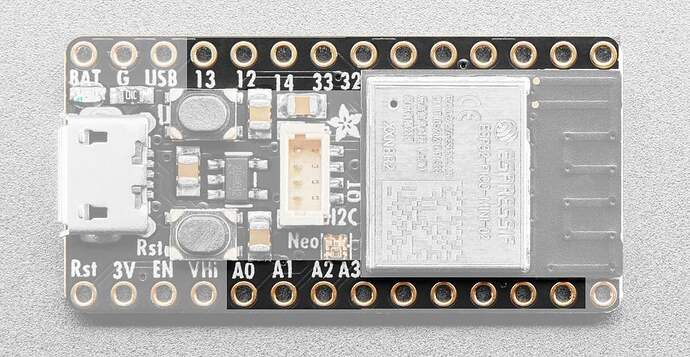In our project, we are using UART to communicate from an ESP32 Itsy Bitsy microcontroller to a BNO085 IMU, and the getSensorEvent() that is responsible to grab sensor data from the IMU is looping forever. Why is this?
Below is the code. In our serial monitor, we receive the print statements from each println up to Serial.println("Before getSensorEvent") , after which getSensorEvent() runs and we do not receive any more print statements.
// Basic demo for readings from Adafruit BNO08x
#include <Adafruit_BNO08x.h>
// For SPI mode, we need a CS pin
#define BNO08X_CS 10
#define BNO08X_INT 9
// For SPI mode, we also need a RESET
//#define BNO08X_RESET 5
// but not for I2C or UART
#define BNO08X_RESET -1
Adafruit_BNO08x bno08x(BNO08X_RESET);
sh2_SensorValue_t sensorValue;
void setup(void) {
Serial.begin(115200);
delay(5000);
while (!Serial) delay(10); // will pause Zero, Leonardo, etc until serial console opens
Serial.println("Adafruit BNO08x test!");
// Try to initialize!
//if (!bno08x.begin_I2C()) {
while (!bno08x.begin_UART(&Serial1)) { // Requires a device with > 300 byte UART buffer!
//if (!bno08x.begin_SPI(BNO08X_CS, BNO08X_INT)) {
Serial.println("Failed to find BNO08x chip");
//while (1) { delay(10); }
delay(10);
}
Serial.println("BNO08x Found!");
for (int n = 0; n < bno08x.prodIds.numEntries; n++) {
Serial.print("Part ");
Serial.print(bno08x.prodIds.entry[n].swPartNumber);
Serial.print(": Version :");
Serial.print(bno08x.prodIds.entry[n].swVersionMajor);
Serial.print(".");
Serial.print(bno08x.prodIds.entry[n].swVersionMinor);
Serial.print(".");
Serial.print(bno08x.prodIds.entry[n].swVersionPatch);
Serial.print(" Build ");
Serial.println(bno08x.prodIds.entry[n].swBuildNumber);
}
setReports();
Serial.println("Reading events");
delay(100);
}
// Here is where you define the sensor outputs you want to receive
void setReports(void) {
Serial.println("Setting desired reports");
if (!bno08x.enableReport(SH2_GAME_ROTATION_VECTOR)) {
Serial.println("Could not enable game vector");
} else {
Serial.println("Game vector enabled");
}
}
void loop() {
delay(10);
if (bno08x.wasReset()) {
Serial.print("sensor was reset ");
setReports();
}
Serial.println("Before getSensorEvent");
while (!bno08x.getSensorEvent(&sensorValue)) {
Serial.println("No new sensor event");
return;
}
Serial.println("After getSensorEvent");
Serial.print("Sensor ID: ");
Serial.println(sensorValue.sensorId);
switch (sensorValue.sensorId) {
case SH2_GAME_ROTATION_VECTOR:
Serial.print("Game Rotation Vector - r: ");
Serial.print(sensorValue.un.gameRotationVector.real);
Serial.print(" i: ");
Serial.print(sensorValue.un.gameRotationVector.i);
Serial.print(" j: ");
Serial.print(" k: ");
Serial.println(sensorValue.un.gameRotationVector.k);
break;
// Add more cases here for other sensor types if needed
}
}



